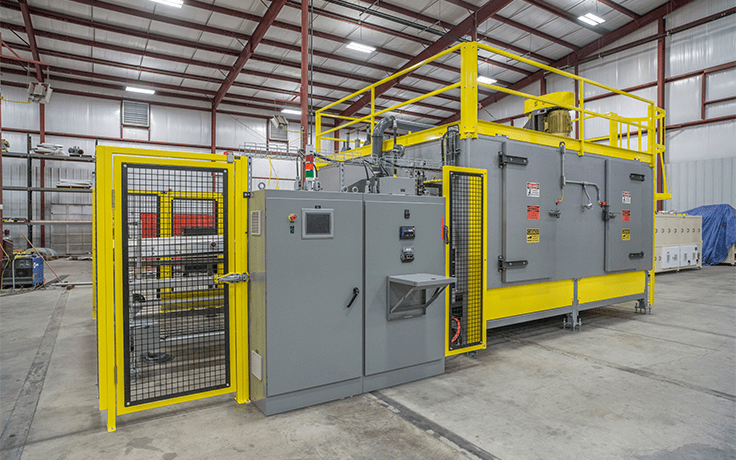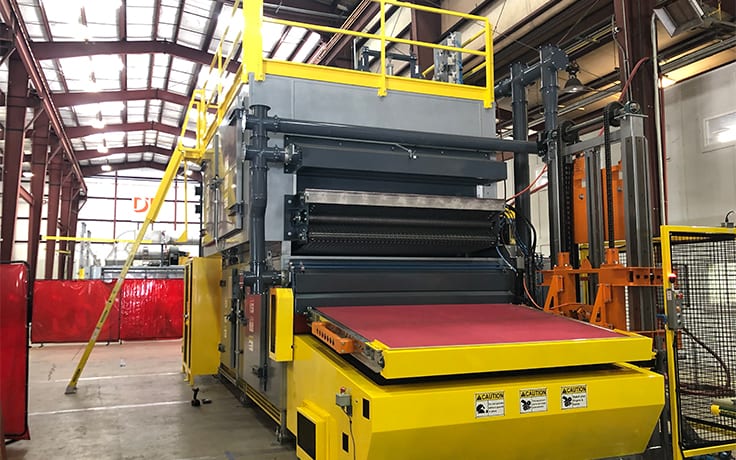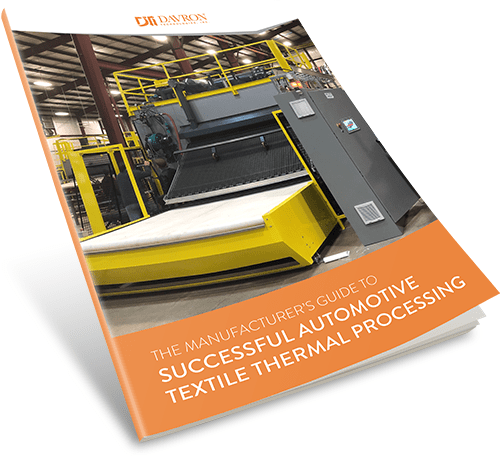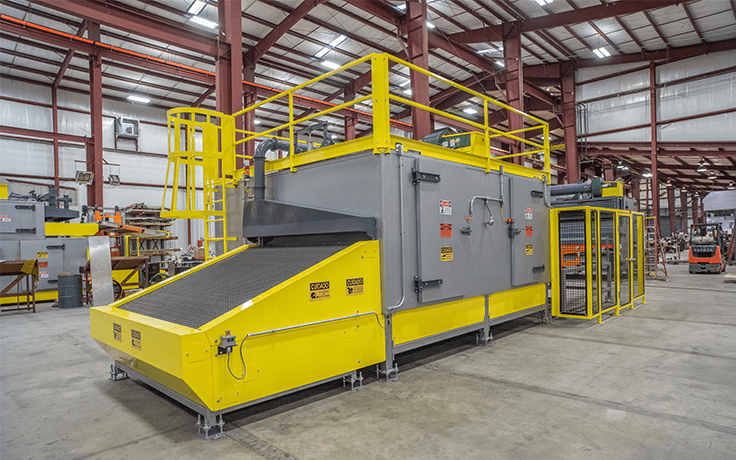If you could summarize the reluctance of manufacturers to change the way something is made in a sentence or two, you might say something like this:
The equipment we use to meet our customer’s requirements is fine. It’s far from perfect, but it’s good enough, and it’s too risky—and costly—to change.
Engineers who are ultimately responsible for meeting production benchmarks tend to stick with what’s familiar, even if what’s familiar isn’t actually ideal. After all, it’s their job on the line. Is it worth rocking the boat in an industry this competitive?
But not everyone is as risk averse.
In 2017, an existing customer sent process specs for a new heating system. Their instructions were clear, but our engineers believed they could develop a better alternative.
The system we built—and then improved upon—is a testament to our customer’s open mind.

The customer’s request
Our customer is a major North American supplier of sound attenuation materials and other automotive textiles.
When an updated carpet system was announced for a new vehicle model, the customer determined they needed an oven to pre-heat what are known as “heavy layers” made of a mixture of petroleum products and barium sulfate. These thin sheets are attached to the undersides of carpets to dampen engine, transmission and road noise.
After conducting internal testing, the customer approached Davron with a request to develop a single-zone infrared (IR) oven to pre-heat the heavy layers prior to further processing. The customer also specified that the system’s cycle time not exceed 30 seconds.
However, IR heating is not ideal for this application. The effectiveness of high-intensity, short-wave IR energy is directly tied to (and limited by) the heat transfer characteristics of the material it heats. Due to their makeup, heavy layers transfer heat poorly.
Instead, we proposed a single-zone convection system that would deliver forced air from above. Convection heating is less intense than IR but is more suitable to heating products with low heat transfer coefficients. The customer agreed to our proposed changes and the system went into production.

Problems emerge after first-generation system integration
Not long after installing the single-zone forced air system, the customer reported some puzzling problems.
First, the product didn’t always transfer correctly from stage to stage as designed. Instead, it sometimes stuck to the conveyor and became lodged in the machine. The gummy wads of product were unusable.
Bringing the heat
The manufacturer’s guide to successful automotive textile thermal processing

Second, the product would sometimes emerge from the oven totally destroyed instead of merely gently pre-heated.
Our investigation of the issues revealed a simple root cause that had cascaded into a serious problem that impacted production:
- The heavy layer blanks were stored outdoors
- During winter, the blanks would be brought into the facility and processed while still cold
- Operators noticed that the cold blanks didn’t heat properly under the normal recipe, so they cranked up the heat
- Around this same time, the OEM changed their heavy layer specification, doubling the thickness from 1/16” to 1/8”
The combination of thicker layers, cold storage and higher heat caused the product transfer and destruction issues. Once aware of why these problems occurred, our engineers got to work solving them.

Second-generation system features novel design updates
A few crucial system design updates corrected our customer’s problems and significantly enhanced their production quality and efficiency.
First, we chose to add a second heating zone and double the overall heating time. Product would enter the first zone and heat for 30 seconds. Then, it transferred into the second zone for 30 more seconds of heat. In this design, pre-heated product still emerged every 30 seconds and the customer’s specified cycle time was met.
In doubling the heating time, the oven could run at a lower oven set point. A lower temperature combined with the design changes described above meant that heat was delivered to the core of the products while eliminating the risk that the surface would get too hot.
Second, we decided to apply heat via forced air from both the top and bottom of the product. Our testing of the second-generation system showed that doubling the heating time and heating from both top and bottom delivered heat to the core of the heavy layers more effectively given the low heat transfer coefficient. It resulted in much more consistent heating regardless of the conditions in which the product was stored.
Those changes led us to recommend switching from electric heating to natural gas. Doubling the heating time and heating from two directions instead of one would have made an electric-heated system quite expensive to operate. It’s less expensive to heat with natural gas given the second-generation system’s process requirements.
As a final precaution, we installed sensors that measure the temperature of the parts before and after heating. These data are stored and accessible for troubleshooting.
Collaboration toward better, smarter manufacturing
The work that resulted in our customer’s current heavy layer thermal processing system was successful for two reasons.
First and foremost was trust. The customer had faith that Davron’s engineers could develop smarter, more consistent equipment that boosts product quality, reduces wasted material and meets production benchmarks.
Second, the initial design and subsequent troubleshooting our team provided proved that faith was well-placed.
Good things happen when smart teams work together, so let’s talk.






